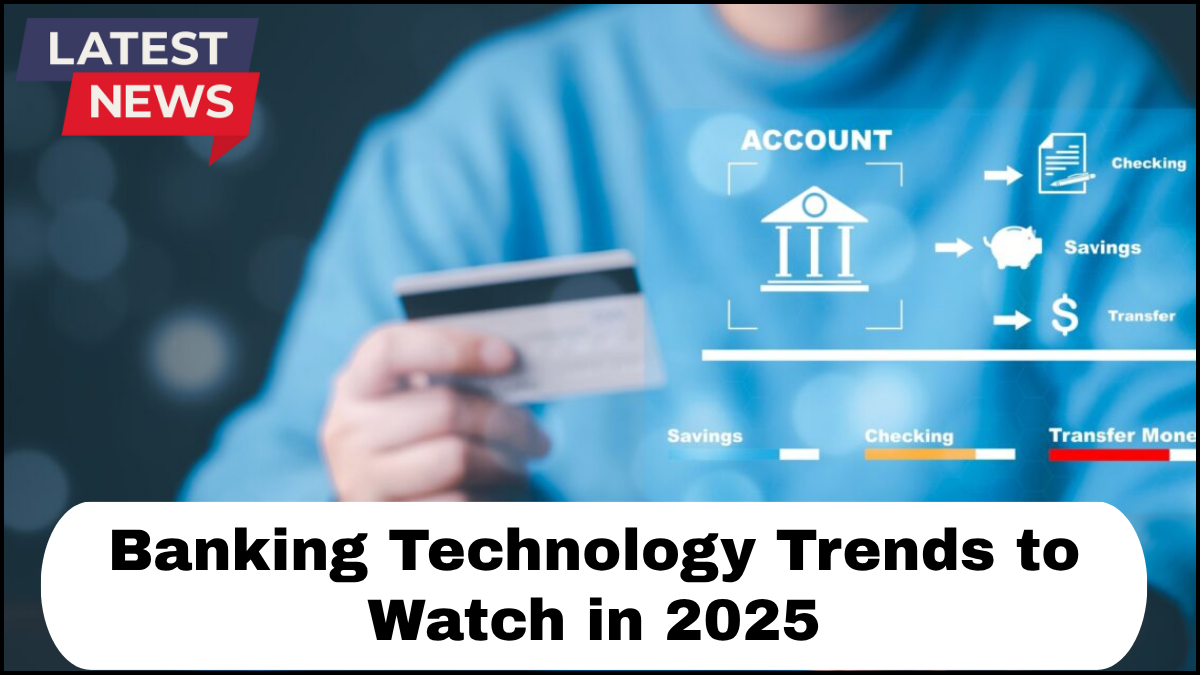The financial industry is undergoing a technological revolution, with 2025 poised to be a landmark year. Banks and financial institutions are not just adopting new technologies—they’re redesigning the entire banking experience. From AI & automation to decentralized finance, the landscape is evolving at breakneck speed. Here’s a deep look into the Banking Technology Trends 2025 that will define the future of finance.

AI & Automation: Smarter, Faster, Leaner Banking
Artificial intelligence and automation will no longer be optional in 2025—they’ll be foundational. Banks are deploying AI to handle everything from fraud detection and credit scoring to personalized customer service and predictive analytics.
-
Smart chatbots will handle over 80% of customer interactions, offering human-like responsiveness 24/7.
-
AI-driven underwriting will streamline loan approvals by analyzing complex data points in real-time, reducing bias and human error.
-
Robotic Process Automation (RPA) will manage routine tasks like data entry and compliance checks, freeing staff for higher-value work.
Banks that fail to adopt AI & automation will struggle to stay competitive, especially as customer expectations rise for faster, more personalized service.
Digital-Only Banking: The New Standard
Branchless banking is moving from trend to norm. In 2025, digital-only banks are expected to surpass traditional banks in customer acquisition rates, especially among Gen Z and millennials.
-
Mobile-first interfaces will be the primary channel for most transactions.
-
Biometric authentication and facial recognition will become the standard for login and payment authorization.
-
Neo-banks will offer hyper-personalized services, using customer behavior analytics to design tailored products and experiences.
The Banking Technology Trends 2025 are clear: physical branches are fading; digital convenience is king.
Cybersecurity Powered by AI
As banking goes increasingly digital, security must evolve in lockstep. AI-powered cybersecurity is one of the most critical trends in 2025.
-
Machine learning models can now detect threats in real time by analyzing user behavior patterns and network anomalies.
-
AI will automatically shut down suspicious activity before it escalates, acting faster than any human response team.
-
Biometric fraud detection and zero-trust architecture will become more widespread to secure sensitive data and customer identities.
The rise of quantum computing also poses new risks, making it essential for banks to adopt post-quantum cryptographic standards.
Blockchain Integration Beyond Cryptocurrencies
Blockchain is maturing beyond its association with crypto. In 2025, banks are incorporating it into core operations:
-
Smart contracts are streamlining processes like loan disbursements, insurance claims, and KYC verifications.
-
Interbank settlements on distributed ledgers are reducing transaction times from days to seconds.
-
Tokenized assets allow fractional ownership and faster liquidity for both retail and institutional investors.
Blockchain will play a critical role in increasing transparency and reducing operational costs across the board.
Embedded Finance and Open Banking
The fusion of banking with non-banking platforms—known as embedded finance—is gaining momentum. In 2025, banking services will be integrated into everyday apps and digital ecosystems.
-
Consumers can apply for loans, open accounts, or invest directly within shopping apps or social media platforms.
-
APIs and open banking frameworks allow third-party developers to build innovative financial services, broadening customer options.
-
Small businesses benefit from instant access to financing embedded in their POS systems or e-commerce platforms.
Open banking is driving collaboration between fintechs and traditional banks, shifting the focus from ownership of services to access.
Personalized Banking Experiences Through Data
Data is the new currency, and banks are finally leveraging it at scale.
-
Advanced data analytics tools provide real-time insights into customer behavior, preferences, and financial health.
-
Banks can now offer contextual recommendations, like suggesting savings plans after analyzing spending patterns.
-
Dynamic credit limits and flexible repayment schedules will be driven by real-time income and expense data.
In 2025, customers will no longer tolerate generic offers. They’ll expect every interaction to be customized and data-informed.
Green Banking and Sustainable Tech
Sustainability isn’t just a social responsibility—it’s a business strategy. Green banking tech is expected to flourish in 2025.
-
Banks are using AI to measure the environmental impact of their loan portfolios.
-
Blockchain enables traceable, transparent ESG (Environmental, Social, and Governance) reporting.
-
Cloud infrastructure helps banks reduce energy consumption and carbon emissions.
Customers are increasingly aligning their banking choices with their environmental values, and financial institutions are responding accordingly.
FAQs
What are the most important Banking Technology Trends in 2025?
Key trends include AI & automation, digital-only banking, AI-powered cybersecurity, blockchain integration, embedded finance, and data-driven personalization.
How is AI changing banking in 2025?
AI is automating customer service, fraud detection, credit scoring, and operational tasks, making banks more efficient and responsive.
Will traditional bank branches still exist in 2025?
They will exist but play a much smaller role. Most services will move online, and physical branches may be repurposed for consultations or digital education.
What’s the role of blockchain in banking now?
Blockchain is used for smart contracts, cross-border payments, tokenized assets, and improving transaction transparency and speed.
Why is cybersecurity more important than ever in banking?
As financial services become more digital, the risks increase. AI-driven cybersecurity protects banks and customers from evolving threats.
click here to learn more